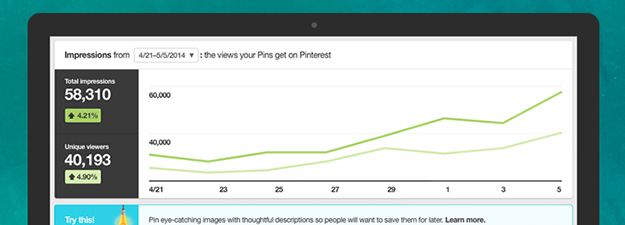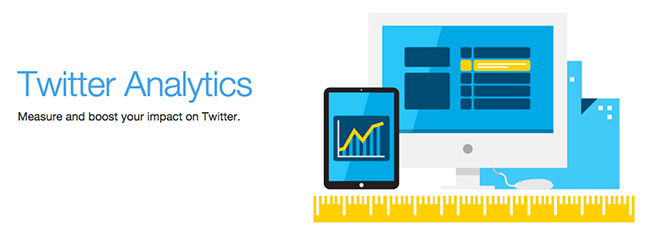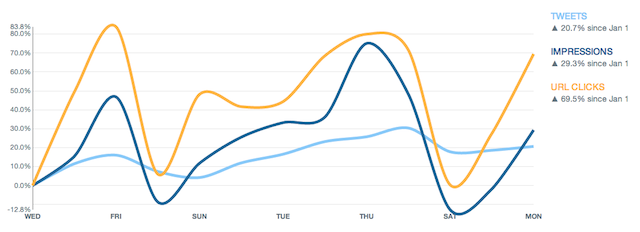
September 6, 2014
Pinterest and Twitter Announce New Social Analytics Platforms
In recent weeks, two major social media players announced new analytics tools for their platforms. Pinterest unveiled sharper and more in-depth customer tracking options for its business users, and Twitter announced that its existing analytics platform, which had previously only been open to advertisers and verified users, will now be open to all Twitter users.
It is certainly exciting to hear two new analytics options announced around the same time. Now, small businesses and social media marketers have a few more tools in their toolbox. Receiving more information about your customer base never hurts. Read on to find out more about what these two analytics tools have to offer.
More visibility is a good thing
First of all, it’s beneficial for anyone with a social presence to find out more about how their social media posts perform—small businesses, artists, independent contractors, and whoever else wants to grow their social media reach. In the early days of the industry, marketers were able to determine that there were some practices that worked better than others, but on the whole, finding out what worked and what didn’t work was more about trial and error than it was about actually understanding the way customers operated. Then, Google and Facebook analytics started changing the game with in-depth tracking and statistics.
Now, Pinterest and Twitter have upped their ante. Hopefully, with these added features, marketers, small businesses and content creators can gather a little more insight into how well they’re attracting their audience’s attention.
Pinterest Analytics for Business Accounts

Pinterest analytics is available for business accounts only. The company just announced that their new analytics platform is meant to provide “meaningful insights” about what customers are interested in. How are they doing this? Here are some of the features Pinterest hopes business users will get excited about:
- Track traffic on your Pinterest profile.
- Find out how much traffic comes from the Pin It button.
- Gather insight into the types of people Pinning your content.
- Learn how people interact with your content from different devices.
- Find out which Pins perform the best.
While Pinterest isn’t spilling all the details about their new analytics platform, it seems like it will help business users paint a clearer picture of who their users are, which content performs well, and what kind of traffic the Pinterest profile is getting. This can help content creators craft new Pins with their users’ preferences in mind, launch related campaigns, and continue coming up with new and better ways to engage with their audience.
Twitter Analytics for All Users

Twitter doesn’t offer the same sort of personal, in-depth information that marketers love from social media giants like Facebook, but the 140-character platform is continuing to grow in popularity. In the last few months, Twitter has added 14 million active monthly users; as more people start using Twitter, the company hopes to attract more businesses into the mix, and one way they are doing this is by opening up their analytics dashboard to all users. Twitter’s new analytics platform could be an enticing factor for those who want to reach a whole new audience.
Twitter Analytics isn’t new, but it had previously been available only to users with paid Twitter Ads accounts. Recently, at the end of August, Twitter announced very subtly through just one single Tweet that the analytics tools would be available to all Twitter users. Accordingly, astute Internet marketers picked up the news and spread it like wildfire. So how can Twitter Analytics benefit business accounts?

The dashboard is fairly user-friendly. It shows how many people are viewing and interacting with created content over time. Twitter analytics tracks both impressions—how many times a Tweet is viewed—and engagements—retweets, replies, favorites and follows. You can also export data files for further analysis. This sort of information about Tweet performance and user activity can help businesses understand what sorts of Tweets are successful so they’re better able to hone their social media output, rather than just shooting in the dark. Small businesses, whose priority list might not have included Twitter before this, may have more incentive to sign up and start Tweeting. Now, there’s no reason not to.
The two analytics platforms mentioned in this post are available at:
- analytics.twitter.com
- analytics.pinterest.com (must be signed in with a business account)



